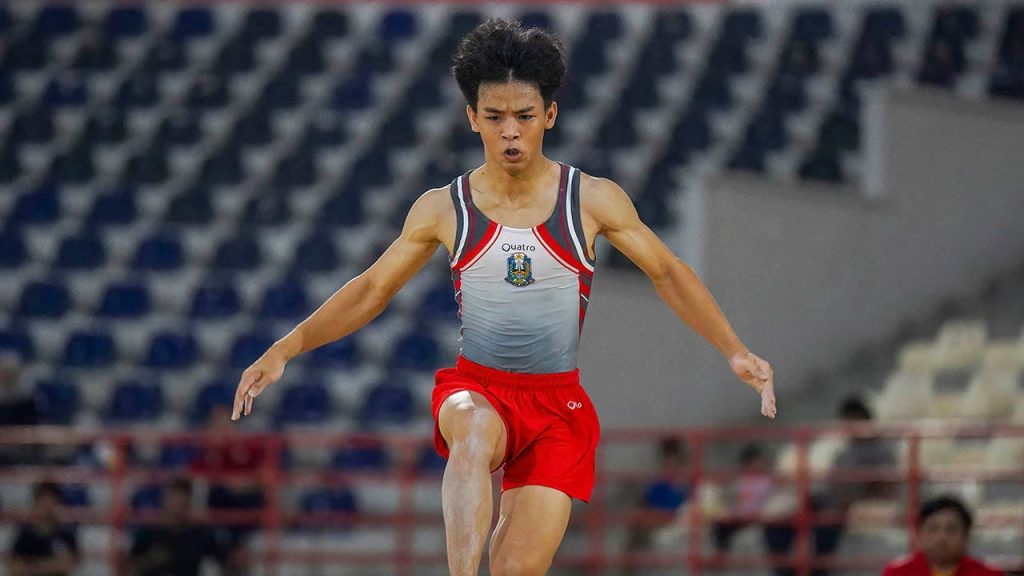Young Olympic Hopeful’s Tragic End Highlights the Dangers of Elite Gymnastics
In a heartbreaking development that has shaken the gymnastics world, 19-year-old Indonesian gymnast Naufal Takdir Al Bari passed away on Thursday following complications from a severe training accident in Russia. The promising athlete, who had been nurturing Olympic dreams for the 2028 Los Angeles Games, spent twelve agonizing days in intensive care at GA Zakharyin Hospital before succumbing to his injuries. The Indonesian Gymnastics Federation confirmed the devastating news on their Instagram account, expressing that the organization was “in mourning” for the talented young man who represented not only the future of Indonesian gymnastics but embodied the dedication and sacrifice that defines Olympic aspirants around the world.
The circumstances surrounding Al Bari’s accident paint a sobering picture of the inherent risks elite gymnasts face daily. According to the Russian Gymnastics Federation, Al Bari suffered a catastrophic neck injury after falling into a foam pit while training on the high bar—equipment that, ironically, contains safety features designed to prevent such tragedies. Vice President of the Russian Gymnastics Federation, Vasily Titov, revealed through a translated Telegram post that an investigation determined Al Bari “was not prepared to perform such a complex element,” though specific details about the exact stunt remain unclear. This tragic oversight raises profound questions about training protocols, athlete readiness assessments, and the sometimes blurry line between pushing boundaries and ensuring safety in a sport where progression often demands attempting increasingly dangerous maneuvers.
Beyond his Olympic aspirations, Al Bari had been diligently preparing for the upcoming Artistic Gymnastics World Championships scheduled for October in his home country of Indonesia—a competition that would have served as a stepping stone toward his larger Olympic dreams. Indonesian Gymnastics chairperson Ita Yuliati’s heartfelt statement captured the magnitude of the loss, describing Al Bari as “a talented young athlete, and a good figure” while acknowledging that “Indonesian Gymnastics has lost the nation’s best.” These words reflect not just the loss of athletic potential but the human dimension of a young life cut short—a person with character, relationships, and a future that extended far beyond the gymnasium floor. For his family, teammates, and a nation that had placed hopes in his abilities, this represents an irreplaceable void.
Al Bari’s tragic passing emerges against the backdrop of growing conversations about athlete welfare in elite gymnastics following high-profile cases like American star Simone Biles’ withdrawal from several Tokyo Olympic events due to mental health concerns and the “twisties”—a dangerous psychological phenomenon where gymnasts lose spatial awareness mid-air. These conversations have increasingly centered around the physical and psychological pressures placed on young athletes in pursuit of excellence, especially in sports like gymnastics where peak performance often occurs during teenage years. The intense training regimens, the expectation to attempt increasingly difficult skills, and the fine balance between pushing boundaries and maintaining safety have come under scrutiny as the gymnastics community grapples with protecting its athletes while fostering elite performance.
The gymnastics world has responded with an outpouring of sympathy and reflection, with social media platforms flooded by tributes from fellow athletes, coaches, and fans worldwide. This collective mourning transcends national boundaries, highlighting how the gymnastics community functions as an extended family united by shared experiences, challenges, and passions. For young gymnasts globally, Al Bari’s death serves as a stark reminder of their own vulnerability despite the strength and seeming invincibility they display in competition. His passing will likely prompt renewed calls for enhanced safety protocols, more stringent readiness assessments before attempting advanced skills, and greater attention to the physical and mental well-being of athletes who often begin intensive training during childhood.
As the gymnastics world moves forward from this tragedy, Al Bari’s legacy might ultimately be measured not just in the medals he never had the chance to win, but in how his story influences the future of the sport he loved. His dreams of representing Indonesia on the Olympic stage in Los Angeles may have been cut short, but his experience could catalyze meaningful changes that protect future generations of gymnasts. The poignant reality remains that for every celebrated Olympic champion whose triumphs we witness, countless others navigate tremendous risks in pursuit of similar glory—some, like Naufal Takdir Al Bari, paying the ultimate price for their devotion to a beautiful but demanding sport. As his family and nation mourn, the international gymnastics community faces the sobering task of honoring his memory by ensuring such preventable tragedies become increasingly rare while preserving the artistry and athletic excellence that drew Al Bari and so many others to gymnastics in the first place.















